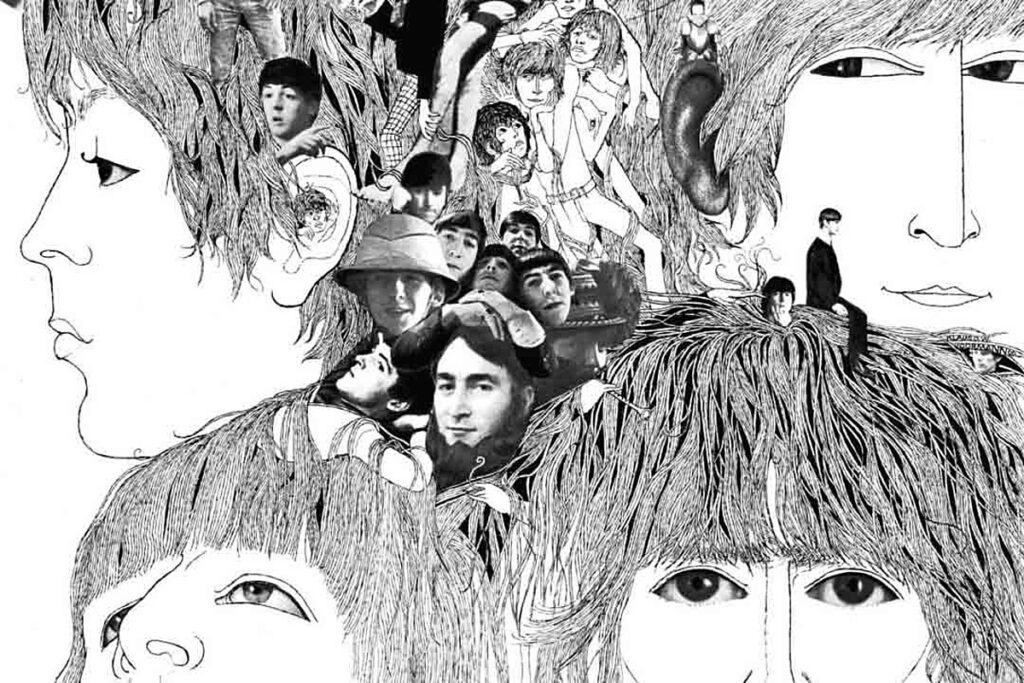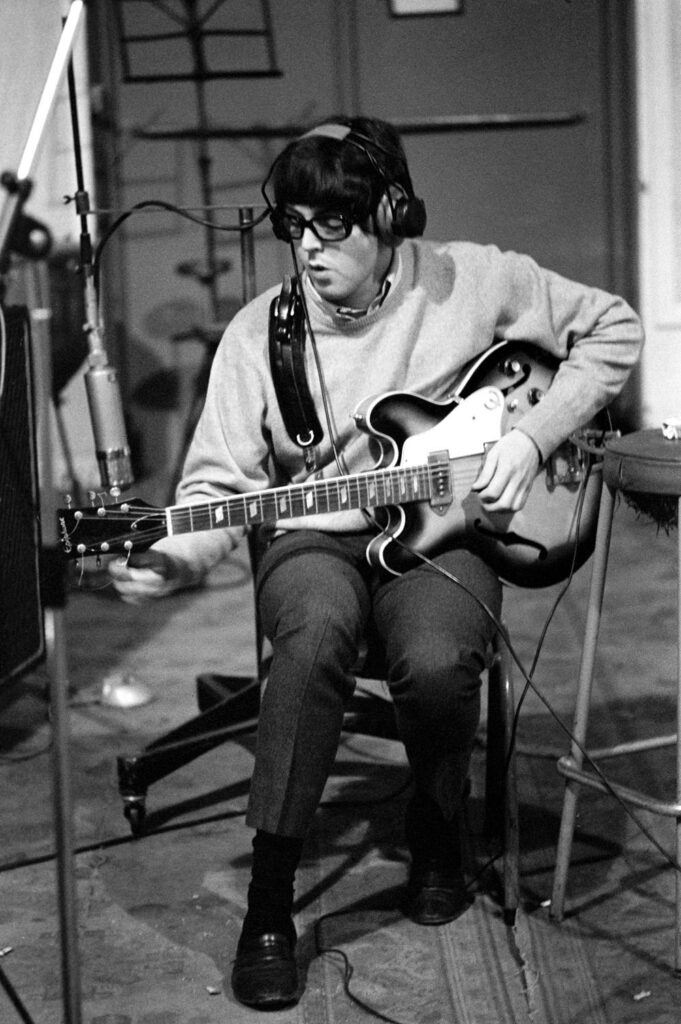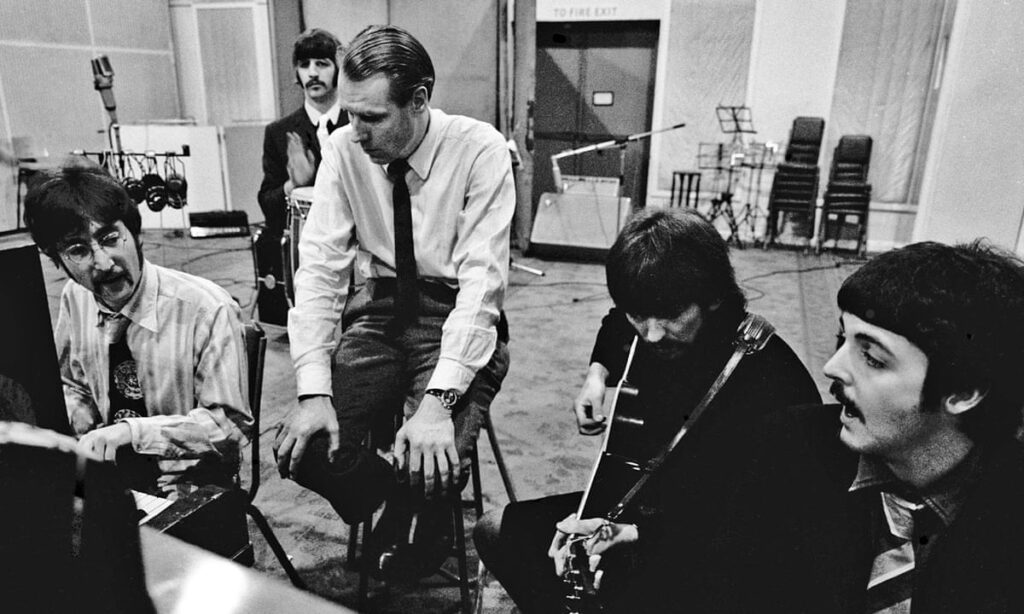Revolver: The Beatles At Their Collaborative and Creative Best

On recording the greatest record album of all-time.
The Beatles album Revolver, forever in the shadow of Sgt. Pepper’s Lonely Hearts Club Band (or even Abbey Road), remains for me the Beatles’ best creation of recorded music. I’ll go further: Revolver is the greatest album ever recorded. I have never wavered in that belief.
Released on August 8, 1966, to critical and commercial acclaim, Revolver hit the top of the Billboard charts for seven weeks and was certified 5x platinum…despite the fact that the band immediately went on tour (their ill-fated last due to John Lennon’s “Jesus” remark) after its release, and didn’t perform a single cut from the album.
Critical Acclaim
Beatles historian Mark Lewisohn put it masterly: “Revolver…shows the Beatles at the peak of their creativity, welding very strong, economical but lyrically incisive song material with brave studio experimentation…Revolver is a pop masterpiece.”
Author Robert Rodriguez wrote a book about it: Revolver: How the Beatles Reimagined Rock ‘n’ Roll. Among his praises, Rodriguez distinguished Revolver as “the Beatles’ artistic high-water mark” and noted that the album was a supremely collaborative effort, “with the group as a whole fully vested in creating Beatles music.”
Rolling Stone ranked Revolver number three among its top 500 albums. Naturally, Sgt. Pepper was number one; the Beach Boys’ Pet Sounds number two. Two more Beatles albums–Rubber Soul and the White Album–found their way into Rolling Stone’s top 10.

The band’s commitment to Revolver began as pure luck. After the release of Rubber Soul in December 1965, the Beatles, at manager Brian Epstein’s command, were poised to shoot their third movie. But no script was deemed suitable. So, instead of being caught in the hectic whirlwind of filming on location, the Beatles had three months to recharge, relax and create.
According to Abbey Road sound engineer Geoff Emerick, in his book Here, There and Everywhere, the Beatles were focused, methodical and self-assured. Emerick:
Incredibly, all the tracks on the album were created in the studio before my very eyes. The Beatles had done no rehearsing beforehand…Almost every afternoon, John or Paul or George Harrison would come in with a scrap of paper that had a lyric or chord sequence scribbled on it, and within a day or two, we’d have another unbelievable track down on tape.
I should add one more attribute to the Beatles’ demeanor: inquisitive. They became quite willing to experiment with new sounds.

Tomorrow Never Knows
The band began working on Revolver on April 6, 1966. Incredibly, they chose as their first song one that would be the most difficult to record. The John Lennon song “Tomorrow Never Knows” satisfied the Beatles’ hunger to set new boundaries in popular music. It was no coincidence that each band member was taking home open-reel tape recorders to conduct their own sonic experiments.
Automatic Double-Tracking
Some of the experimentation included playing tracks backwards, speeded up or slowed down, overdubs, tape loops and Automatic Double Tracking (ADT). This technique, developed by Ken Townsend, sound engineer for EMI, takes identical performances on a multi-track tape machine and, during the mixing process, purposely steers the second sound slightly out-of-synch (we’re talking milliseconds here) in order to “widen” the sonic image for a “chorused effect.”
“Tomorrow Never Knows” was a harbinger of things to come. The song sent a sort of notification to the world that the Beatles were not at all afraid to push the envelope.
Eleanor Rigby
Here is a video of “Eleanor Rigby,” just over two minutes long, the version taken from the movie Yellow Submarine, with graphics appropriate to the movie, published by The Beatles, a VEVO production via YouTube:
Here, There and Everywhere
This beautiful McCartney ballad “Here, There and Everywhere” was said to be Paul’s favorite song. But you cannot discount the contribution made by producer George Martin, who directed the lush harmonies sung by Paul, John and George. Author Geoff Emerick: “George’s [Martin] real expertise was…in vocal harmony work. That is his forte, grooming and working out those great harmonies.”

Got to Get You Into My Life
A rousing, horn-based song titled “Got to Get you Into My Life” recalled Motown or other soul offerings (the song was ably covered by R&B favorites Earth, Wind & Fire). In frenetic style, Paul McCartney really let loose vocally. “At one point,” recalled Emerick, “while Paul was recording the lead vocal, John actually burst out of the control room to shout his encouragement–evidence of the camaraderie and the teamwork that was so pervasive during the Revolver sessions.”
Coda
Revolver was completed in just 10 week (with weekends off) and released while the Beatles last tour was in full-swing. There was no doubt the music set a new standard for Beatles excellence, and the folks at the Abbey Road studio were asking themselves: How can we top this?
A fine gentleman lurking in the wings, a one Sgt. Pepper, would have a say in that.















































































































